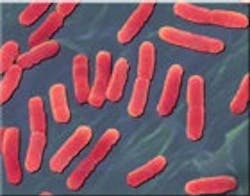Ten California Water Systems Face Fines For Failing To Monitor E. Coli In Drinking Water
The U.S. Environmental Protection Agency (EPA) has ordered ten California public drinking water systems to monitor for E. coli in the sourcewater of their drinking water systems, or face penalties of up to $32,500 per day for each violation.
E. coli is a type of fecal coliform bacteria commonly found in the intestines of warm-blooded animals and humans. The presence of E. coli in water is a strong indication of recent sewage or animal waste contamination.
“It is vital that drinking water systems develop their plans and sample promptly,” said Alexis Strauss, the Water Division director for the EPA’s Pacific Southwest region. “This requirement protects the public from potentially harmful microorganisms in drinking water.”
The EPA’s orders require these public drinking water systems to develop monitoring plans and conduct pathogen monitoring, as required by the federal Safe Drinking Water Act. The monitoring plans are required of all public water systems that obtain their water from a surface source (such as a river, lake or a well that is under the influence of surface water) and are part of a year-long sourcewater monitoring effort for E. coli, designed to prevent contaminated drinking water.
The EPA has issued orders to the following ten California public water systems:
- Markleeville Water Co., Alpine County
- Lake Alpine Recreation Area, Alpine County
- Cedar Crest Resort, Fresno County
- Panoche Water District, Fresno County
- PG&E Balch Camp, Fresno County
- San Andreas Farms, Fresno County
- Elk Creek Community service district, Glenn County
- Town of Scotia Company, Humboldt County
- Coffee Creek Ranch, Trinity County
- Riverview Acres Water Systems, Trinity County
The requirements are part of the Long Term 2 Enhanced Surface Water Treatment Rule, which increases treatment requirements for water systems that have high levels of Cryptosporidium in their source water. Systems serving fewer than 10,000 people have the option of initially monitoring for E. coli in their source water, which may be an indicator of Cryptosporidium. If the E. coli levels are too high, the system is required to monitor for Cryptosporidium.
Water systems with high levels of Cryptosporidium or which do not filter their water must provide additional protection, such as ultraviolet disinfection, and watershed control programs.
For more information please visit: www.epa.gov/safewater/disinfection/lt2.
Source: EPA
